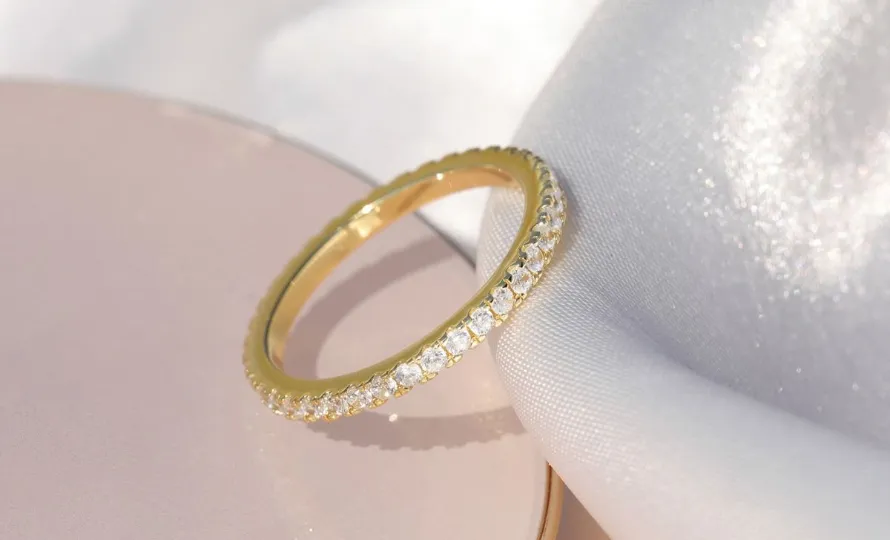Gold jewelry has occupied a dominant position in the history of jewelry for a long time, and it is also an internationally recognized hard currency for trade. Today’s gold jewelry is divided into 10K\14K\18K\24K, but when it comes to the practicality and beauty of gold jewelry At the time, only 14k gold stood out. The question ‘Why is jewelry 14k gold?’ has been a debate for quite some time and in this article you will learn about the purity and practicality that 14k gold offers.
Why is jewelry 14k gold?
Balancing durability and purity, 14k gold provides an ideal balance between the purity of gold and the durability needed for everyday wear. 14K gold refers to gold with a purity of 585, 58.5% gold added with 41.5% of other metals. This alloy is harder than 18K and 24K, and has a brighter color.
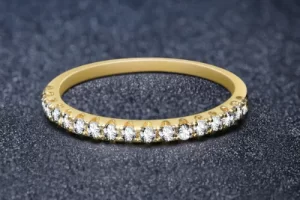
Ideal for everyday wear
14K gold jewelry is the best partner for durability and beauty. 14K gold is usually the first choice for daily wear jewelry. Gold in jewelry needs to be assessed for its resistance to oxidation and its hardness but plasticity. Therefore, after comprehensive consideration, 14K is the best choice for gold jewelry.
14k gold jewelry production process
Casting: A wax model is then used to create a mold. The mold is filled with molten 14K gold. 14K gold is an alloy that contains 58.3% gold mixed with other metals such as copper, silver, and zinc.
Melting Gold: Melting the appropriate proportions of gold and alloy metals together in a furnace.
Pouring gold: Molten gold is then poured into a mold containing a wax model.
Lost Wax Process: For complex designs, a “lost wax” casting method is used. The mold containing the wax is heated until the wax melts and burns away, leaving a jewelry-shaped cavity.
Cooling and demoulding: After the gold is cast into the mold, it is allowed to cool and solidify. The mold is then taken apart to reveal the rough gold embryo.
Hallmarking: Jewelry is often hallmarked to indicate the purity of its gold (14K).
Is 14K gold pure gold?
It is real gold but not pure gold. Pure gold (24K) is generally used for financial products such as gold bars and gold bricks, and is rarely used for jewelry, because in the gold and jewelry industry “K” represents the gold content of 1K equal to 4.166%, 24K It is 99.9% gold content, and it is impossible for gold to reach 100% purity. The higher the purity of gold, the softer the texture, the easier it is to deform, and is not suitable for wearing as jewelry. This is why 14K is popular in the jewelry market.
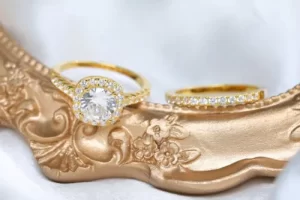
More cost-effective 14K
Why do you say this? Suppose you have purchased a 24K gold bar for financial management, but it can only be placed in a safe all day long. It is soft and cannot be cast into jewelry. Compared with 14K gold, it is only the difference in purity of gold, and it is purchased as jewelry. not only has the function of use, but also has lower maintenance and replacement costs, which can reduce the risk of financial management purposes.
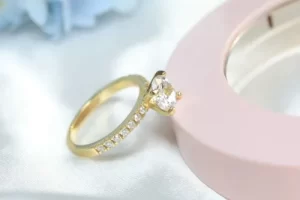
14K Gold Excellent Stability
The emergence of 14K gold is like the two poles of yin and yang mentioned in Chinese Tai Chi. The extremes of things must be reversed, and only by pursuing balance can we achieve our best. I can only say that 14K gold is very similar. It is a very good choice whether it is used as jewelry or financial products. It has high hardness. It is not easy to deform and is not allergic to the skin. The jewelry properties allow you to seek warranty or return or exchange, and the price/performance ratio is quite high.
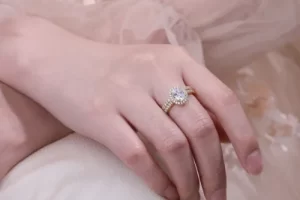
Gold plating and 14K gold
The main market for gold-plated jewelry is in the jewelry wholesale market. Their main material is 925 sterling silver. On this basis, it is electroplated into gold and rose gold appearance colors, and these colors can be differentiated into 14k and 18k. In fact, gold The content is 0%, but the price is very cheap and can be used as a replacement for 14K gold or 18K gold jewelry.
FAQs
- What determines the color change of 14k gold?
The type and proportions of gold alloy metals affect the color of 14k gold, resulting in shades such as yellow, white, and rose gold. - Is 14k gold suitable for sensitive skin?
Very suitable, 14k gold is generally well tolerated by those with sensitive skin. - How does 14k gold perform as a long-term investment?
Although 14k gold is not the highest purity, it still retains a considerable resale value and is a smart investment when it comes to gold. - Can 14k gold jewelry be resized and repaired?
Yes, 14k gold jewelry can be resized and repaired. - What are the best practices for caring for 14k gold jewelry?
Regular cleaning with mild soap, proper storage, and regular professional inspections can keep your 14k gold jewelry in pristine condition. - How can I know if my jewelry is really 14k gold?
Look for a hallmark seal (usually “14k” or “585”) and consider having it professionally tested to verify authenticity.

